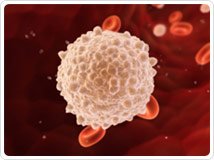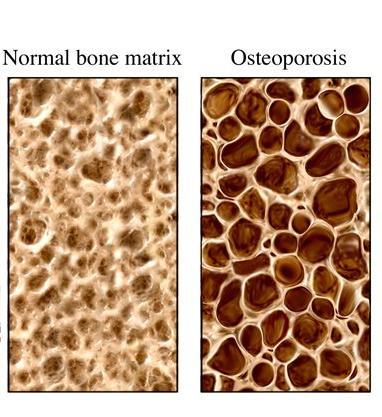The root genetic cause of leukaemia has been traced back to early life in the womb, scientists say.
Experts from the Institute of Cancer Research in London, UK, analyzed the entire three billion letter sequence of DNA-coding in identical twins to reveal what sets off the disease.
Researchers hope the findings, published in PNAS journal, could lead to new drugs to fight the condition at source.
Leukaemia is the most common cancer diagnosed in children.

The root genetic cause of leukaemia has been traced back to early life in the womb
Researchers studied twins studied that had the most common form of leukaemia that affects children – acute lymphoblastic leukaemia (ALL), which is a cancer of the white blood cells.
It is already known that multiple faulty genes are linked to the condition and that environmental factors probably act as triggers along the way. But the precise sequence of events leading up to a diagnosis of ALL is unclear.
The scientists wanted to find out more about the disease so that, ultimately, a better treatment could be found.
Although ALL is often curable, the medicines used to treat it can cause unpleasant and sometimes severe side effects.
Prof. Mel Greaves and his colleagues decided to study identical twins who shared the same DNA inherited from their parents.
Both twins developed ALL in early childhood, at around four years of age.
By comparing blood and bone marrow samples of the twins in later childhood, the researchers found one genetic mutation identical in both twins – a common leukaemia-causing gene called ETV6-RUNX1.
The scientists reason that this mutation must have arisen in one of the twins while in the womb.
Cells carrying the mutation then spread to the other twin via their shared placental blood circulation.
The identical twins had a total of 22 other mutations, but none of these mutations was shared by both twins, and so they must have accumulated after birth as the disease progressed, say the researchers.
Study co-author Prof. Mel Greaves said: “We were able to sequence the entire human genome. It told us for the first time that this is the key mutation that starts the whole process of leukaemia. The other mutations must have happened after birth.”
A new study found that similarities between the DNA of modern people and Neanderthals are more likely to have arisen from shared ancestry than interbreeding.
That is according to research carried out at the University of Cambridge and published this week in PNAS journal.
Previously, it had been suggested that shared parts of the genomes of these two populations were the result of interbreeding.
However, the newly published research proposes a different explanation.
The origin of modern humans is a hotly debated topic; four main theories have arisen to describe the evolution of Homo sapiens.

A new study found that similarities between the DNA of modern people and Neanderthals are more likely to have arisen from shared ancestry than interbreeding
All argue for an African origin, but an important distinction in these competing theories is whether or not interbreeding – or “hybridization” – between modern and ancient humans has occurred.
In the current study, Cambridge evolutionary biologists Dr. Anders Eriksson and Dr. Andrea Manica used computer simulations to reassess the strength of evidence supporting hybridization events.
They argue that the amount of DNA shared between modern Eurasian humans and Neanderthals – estimated at between 1-4% – can be explained if both arose from a geographically isolated population, most likely in North Africa, which shared a common ancestor around 300-350 thousand years ago.
When modern humans expanded out of Africa, around 60-70,000 years ago, they took that genetic similarity with them.
By contrast, previous ancient DNA studies of Neanderthal remains have shown that their genomes harbor genetic signatures – polymorphisms – that are also seen in the genomes of modern Europeans, East Asians and Oceanians (from Papua New Guinea) but not in modern African populations.
The findings challenged previously held views – based on several lines of evidence – that modern humans had replaced the Neanderthals with little or no gene flow occurring between the two groups.
The observations from the Neanderthal genome led some evolutionary biologists to argue that this genetic similarity had arisen through hybridization between Neanderthals – already resident in Europe and western Asia – and the ancestors of present-day non-Africans.
Prof. David Reich, from Harvard University in Cambridge, US – an exponent of the hybridization theory – is not convinced that the data represents a powerful argument against interbreeding.
By using methods that are able to differentiate between genetic similarity caused by gene flow via hybridization vs. shared ancestry, he argues that “the patterns observed [in our analyses] are exactly what one would expect from recent gene flow” – a view shared by his collaborator Professor Svante Paabo from the Max Planck Institute for Evolutionary Anthropology in Leipzig, Germany.
Prof. David Reich went on to say that their data shows that Neanderthals and non-Africans last exchanged genetic material 47-65,000 years ago.
NASA scientists have discovered a new technique to detect osteoporosis bone loss at the earliest disease stages.
Currently, the condition can go undetected for years and may only be diagnosed with scans after weakening of the bones has led to a fracture.
The new test – designed partly with astronauts in mind as they too can suffer bone loss due to the microgravity of space – looks for traces of bone calcium in the urine.
The work is published in PNAS journal.
The technique developed by scientists at Arizona State University working with the US space agency analyses calcium isotopes – different atoms of the element calcium, derived from bone and each with their own specific number of neutrons.

NASA scientists have discovered a new technique to detect osteoporosis bone loss at the earliest disease stages
The balance or abundance of these different isotopes changes when bone is destroyed and formed and can therefore indicate early changes in bone density.
To put it to the test, the researchers studied a dozen healthy volunteers whom they confined to bed rest for 30 days. Prolonged bed rest triggers bone loss.
The technique was able to detect bone loss after as little as one week of bed rest – long before changes in bone density would be detectable on conventional medical scans such as dual-energy X-ray absorptiometry (DXA).
And, unlike other biochemical tests for bone loss that look for blood markers of increased bone turnover, it can give a direct measure of net bone loss.
Lead researcher Prof. Ariel Anbar said: “The next step is to see if it works as expected in patients with bone-altering diseases. That would open the door to clinical applications.”
As well as being useful for diagnosing osteoporosis it could help with monitoring other diseases that affect the bones, including cancer.
NASA nutritionist Scott Smith said: “NASA conducted these studies because astronauts in microgravity experience skeletal unloading and suffer bone loss. It’s one of the major problems in human spaceflight, and we need to find better ways to monitor and counteract it.”



